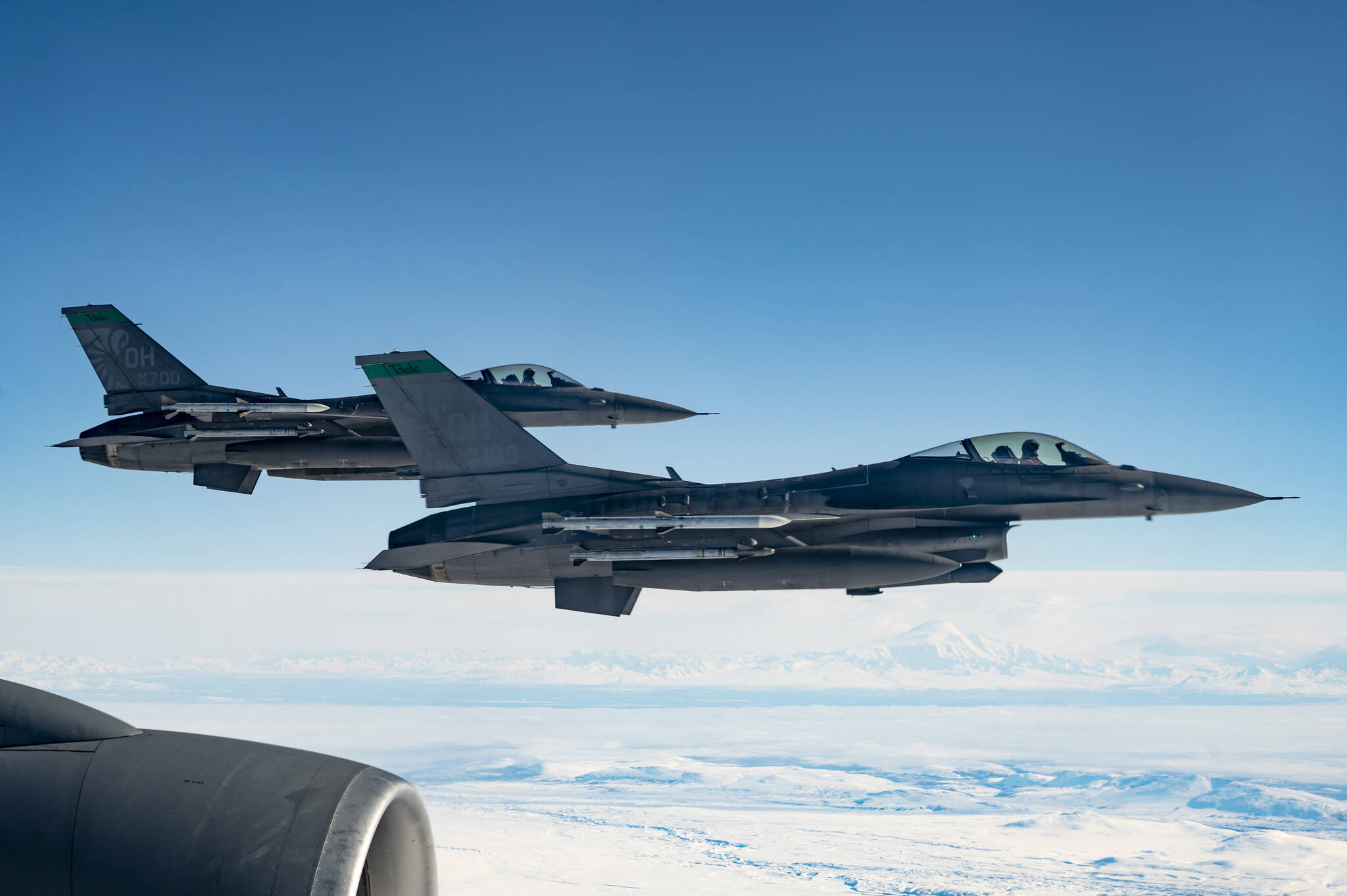Thursday marked the conclusion of Arctic Edge 2022, a major cold-weather exercise held across Alaska.
Servicemembers from the U.S. and Canada practiced their specialties in the unforgiving weather of the north as the Department of Defense emphasizes Arctic capability.
“Overall, we are definitely considering Arctic Edge 22 a success from the Alaska Command perspective,” said Air Force Capt. Lauren Ott, an Alaska Command public affairs officer, in a phone interview. “There are a lot of moving parts that go into an exercise of this scale. At the end of the day, we achieved our objective of testing our ability to operate in the Arctic.”
Juneau hosted contingents from the Navy, Special Operations Command and the Royal Canadian Navy, represented by the minesweeper HMCS Brandon.
[Man medevaced to Seattle following hit and run]
“We met all of our objectives. We sent 40 folks up there as part of our expeditionary mine countermeasures company,” said Navy Cmdr. Mike Dalrymple, commanding officer of Explosive Ordnance Disposal Mobile Unit 1 in a phone interview. “So much work goes into just getting up there. When we got there it was just awesome.”
Sailors from EODMU1 operated in Juneau, clearing simulated explosives both in and out of the ocean.
“Navy EOD: our hallmark is being adaptable and problem solvers. We couple that with using emergent technology,” Dalrymple said. “That allows us to very rapidly and with a lighter footprint to go out and reacquire and neutralize the threat.”
Personnel from the unit used unmanned underwater vehicles to scan more than 10 square nautical miles of seafloor for simulated explosives so divers could dive and neutralize them, Dalrymple said. The UUVs allow the teams to clear a much larger area than divers alone could, Dalrymple said.
“Ten nautical miles, it’d be impossible for a diver to clear that,” Dalrymple said. “We’re able to rapidly find, fix and finish. We’re turning it into a much much shorter kill chain of hours versus days.”
Operating in Juneau is a far cry from EODMU1’s home port in southern California, Dalrymple said, with difficulties for both man and machine.
“The environment is a challenge. The tidal swings is something we’re not as accustomed to down here,” Dalrymple said. “It’s a more challenging bottom type — the clutter and the type of sediment is different. You can’t overlook the ruggedness you need to operate in the Arctic.”
The same difficulties extend even to servicemembers whose job doesn’t regularly take them into the dark ocean, Ott said. Units participating in the exercise came from states like Ohio, South Carolina, and Florida, places with a markedly less boreal climate.
“For those units and equipment that come out to Alaska and operate in the Arctic, if they haven’t done it before, there’s things they need to do differently. I think a big takeaway is what can we do now to better prepare ourselves to potentially deploy to a cold weather environment,” Ott said. “Certain parts and pieces you may have to swap out every six months when you’re in South Carolina may require you to swap out more frequently in an arctic environment. You understand, ‘now I will bring twice as much of this particular unit.’”
Units have returned home now, Ott said, as the after-action process begins and servicemembers begin to digest and disseminate the lessons they learned in the far north.
“Arctic Edge brings us all together as a joint, combined, and allied force to think about how we can defend the Arctic, how we can work together to not just survive up here but thrive and be able to protect our homeland,” said Air Force Lt. Gen. David Krumm, commander of Alaska Command, in a statement. “This has been a great exercise. I think we’ve learned a lot. Our nations, both Canada and the United States working together, we’ve done an incredible amount together and I look forward to the future.”
• Contact reporter Michael S. Lockett at 757-621-1197 or mlockett@juneauempire.com.

